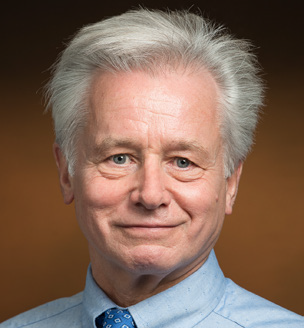Theme:
Biological Sciences 2019
The biological sciences contain the branches of science that includes the study of organisms such as plants, animals, microorganisms, and human beings. Biological sciences explore the science of life, from biomolecules to ecosystems. Biological Sciences is a rapidly developing subject area. The study of living things has undergone enormous expansion in recent years, and topics like cell biology, developmental biology, evolutionary biology and ecology are advancing quickly. Biological sciences consists all the divisions of natural sciences examining different aspects of vital processes. It consists physiology, cell biology, anatomy, biochemistry and biophysics, and covers all organisms from microorganisms, animals to plants.
Genetic engineering is also called as genetic modification and it is the direct manipulation of an organism's genes using biotechnology. It is a set of technologies used to change the genetic makeup of cells, which includes the transfer of genes within and across species boundaries to produce enhanced or novel organisms. New DNA is obtained by either isolating or copying the genetic material of interest using recombinant DNA methods or by artificially synthesizing the DNA.
Genetic engineering is used to strengthen or alter the characteristics of an individual organism. Creation of genetically modified organisms requires recombinant DNA. Recombinant DNA is a amalgamation of DNA from different organisms or different locations in a given genome that would not normally be found in nature. In most cases, use of recombinant DNA means that you have added an extra gene to an organism to alter a trait or add a new trait. Some uses of genetic engineering include improving the nutritional quality of food, creating pest-resistant crops, and creating infection-resistant livestock.
Biochemistry, sometimes called as biological chemistry. Bio chemistry is the branch of science deals with the chemical and physio chemical processes and substances which happen within living organisms. It is the study of chemical processes within and relating to living organisms. It deals with the chemical reactions required for life to exist and function.
It emphasis on processes occurring at a molecular level. It focuses on what is happening inside cells, studying components like proteins, lipids and organelles. It also looks at how cells communicate with each other, for example during growth or fighting illness. Biochemists get to know how the structure of a molecule relates to its function, allowing them to guess how molecules will interact. Biochemistry is both a life science and a chemical science - it explores the chemistry of living organisms and the molecular basis for the changes occurring in living cells. It utilizes the mechanisms of chemistry, physics, molecular biology and immunology to know the structure and behavior of the complex molecules discovered in biological material and the ways these molecules interact to form cells, tissues and whole organisms. Today, the main focus of pure biochemistry is on understanding how biological molecules give rise to the processes that occur within living cells, which in turn relates greatly to the study and understanding of tissues, organs, and whole organisms - that is, all of biology.
Biotechnology is the use of living systems and organisms to develop or make products, or any technological application that uses biological systems, living organisms, or derivatives thereof, to make or modify products or processes for specific use.
Biotechnology a combination of different technologies, applied together to living cells, including not only biology, but also subjects like mathematics, physics, chemistry and engineering. Its application ranges from agriculture like Animal Husbandry, Cropping system, Soil science and Soil Conservation, Plant Physiology, Seed Technology and Crop Management to industries which deal with food, pharmaceutical, chemical, byproducts, textiles, medicine, nutrition, environmental conservation, Cell Biology, making it one of the fastest growing fields. Biotechnology can modify genetic structure in animals and plants to improve them in desired way for getting beneficial products.
Modern biotechnology allows manufacturing existing medicines relatively easy and less economical. Modern biotechnology facilitates its use in pharmaceutical drug discovery, production and development, pharmacogenomics and genetic screening.
Bio physics deals with the biological processes by applying the theories and methods traditionally used in the physical sciences
Biophysics applies the approaches and methods of physics to study biological systems. Biophysics includes all scales of biological organization, from molecular to organismic and populations. Biophysical research shares overlap with biochemistry, physical chemistry, nanotechnology, bioengineering, computational biology, biomechanics and systems biology.
Biology studies life in its variety and complexity. It explains how organisms go about getting food, communicating, sensing the environment, and reproducing. On the other side, physics looks for mathematical laws of nature and makes detailed predictions about the forces that drive idealized systems. Spanning the distance between the simplicity of physical laws and the complexity of life is the challenge of biophysics. Looking for the procedures in life and analyzing them with math and physics is a powerful way to gain insights.
Developmental biology is the study of the process by which animals and plants grow and develop and is synonymous with ontogeny. Biological development, the progressive changes in size, shape, and function during the life of an organism by which its genetic potentials (genotype) are translated into functioning mature systems (phenotype). Most modern philosophical outlooks would consider that development of some kind or other characterizes all things, in both the physical and biological worlds. Such points of view go back to the very earliest days of philosophy.
In animal’s development occurs in embryonic life, but it is also found in regeneration, asexual reproduction and metamorphosis, and in the growth and differentiation of stem cells in the adult organism. In plants, development occurs in embryos, during vegetative reproduction, and in the normal outgrowth of roots, shoots and flowers. Developmental Biology has also help to generate modern stem cell biology which promises a number of important practical benefits for human health. Embryology is a subfield, the study of organisms between the one-cell stage (generally, the zygote) and the end of the embryonic stage.
Embryology and developmental biology today deal with the various steps necessary for the correct and complete formation of the body of a living organism.
Microbiology is the study of microscopic organisms (microorganisms) and their interactions with other living organisms. Microbiology is the scientific study of the microorganisms. Microorganisms are those organisms that are too small to see with the naked eye and include things like bacteria, fungi, and viruses. Microbiologists study these organisms using tools, like microscopes, genetics, and culturing. Microscopes allow scientists to magnify microbial cells that are otherwise too small to see. Genetics and molecular biology help scientists understand the evolutionary relationships between microbes and their habitats.
Immunology is the branch of medicine and biology concerned with immunity. It deals with the response of an organism to antigenic challenge and its recognition of what is self and what is not. It deals with the defense mechanisms including all physical, chemical and biological properties of the organism that help it to combat its susceptibility to foreign organisms, material, etc.
Toxicology is the scientific study of harmful effects that occur in living organisms due to chemicals. It involves observing and reporting symptoms, mechanisms, detection and treatments of toxic substances, in specific relation to the poisoning of humans. It comprises chemical compounds and environmental agents found in nature, as well as pharmaceutical compounds that are synthesized for medical use by humans. These substances may produce toxic effects in living organisms including disturbance in growth patterns, discomfort, disease and death.
Pharmacology is the branch of medicine deals with the uses, effects, and modes of action of drugs. It is the science of drugs including their origin, composition, pharmacokinetics, therapeutic use, and toxicology. The properties and reactions of drugs especially with relation to their therapeutic value.
Neurobiology deals with nervous system structures and functions. More particularly, it focuses on the cells and tissues of the nervous system and how they can form structures and circuits (pathways) for controlling the body. Neurobiology is the branch of the life sciences deals with the anatomy, physiology, and pathology of the nervous system. Neurobiology can be classified as a sub-discipline within the broader field of physiology. It is relatively broad as a scientific field, and can be applied to multiple organism types, including humans, vertebrate animals (animals with backbones), and invertebrates (animals without backbones). The term neurobiology is often used as a substitute for neuroscience, but the key distinction is that neurobiology is often limited to just the biological aspect of this system, and not the interdisciplinary aspects that we see in neuroscience.
The cell is the basic structural, functional, and biological unit of all known living organisms. A cell is the smallest unit of life that can replicate independently, and cells are often called the "building blocks of life". The study of cells is known as cell biology.
The human body is composed of trillions of cells. They provide structure for the body, take in nutrients from food, convert those nutrients into energy, and carry out specialized functions. Cells contain the body’s hereditary material and can make copies of themselves. Cell is the basic structural and functional unit of all organisms; they may exist independent units of life (as in monads) or may form colonies or tissues as in higher plants and animals.
Pharmaceutics is the study of relationships between per formulation, pharmaceutical formulation, delivery, disposition and clinical response. The inherent instability nature of a new drug will alter its desired form into undesired form when presented in a suitable dosage form with the excipients upon storage. In early days this process was confined only for assessing few characteristics, but today this process is being considered as a formulation strategy and hence tremendous technological advancement has been achieved in this field which enables us to save time and money through planned management system and hence impacts .Use of glorious statistical software even based on artificial neural networking are made the task of preformulating and optimization process easier. With the increasing number of novel and specialized compounds being developed, a "one size fits all" approach to drug formulation and delivery is no longer optimal, necessitating the consideration of formulations unique to each drug.
Revenues within the global generics market reached an estimated value of $265 b in 2012, showing a growth of 9.3% throughout the year. The contribution of generics is approximately 20% of overall international pharmaceutical market. The utilization of generic in terms of volume is higher in the US and lower in Japan, 89% and 24% respectively.
Pharmaceutical nanotechnology has provided more fine-tuned diagnosis and focused treatment of disease at a molecular level. Pharmaceutical nanotechnology is most innovative and highly specialized field, which will revolutionize the pharmaceutical industry in near future. Pharmaceutical nanotechnology presents revolutionary opportunities to fight against many diseases. It helps in identifying the antigen associated with diseases such as cancer, diabetes mellitus, neurodegenerative diseases, as well as detecting the microorganisms and viruses associated with infections. It is expected that in next 10 years market will be flooded with nanotechnology devised medicine.
Size reduction is a fundamental unit operation having important applications in pharmacy. It helps in improving solubility and bioavailability, reducing toxicity, enhancing release and providing better formulation opportunities for drugs. In most of the cases, size reduction is limited to micron size range, for example, various pharmaceutical dosage forms like powder, emulsion, suspension etc. Drugs in the nanometer size range improve performance in a variety of dosage forms. Major advantages of nanosizing include (i) increased surface area, (ii) enhanced solubility, (iii) increased rate of dissolution, (iv) increased oral bioavailability, (v) more rapid onset of therapeutic action, (vi) small amount of dose required, (vii) decreased fed/fasted variability, and (viii) decreased patient-to-patient variability.
The innovative Pharmaceutical industry in the United States produces chemically-derived drugs developed as a result of extensive R&D and Clinical trials in both humans and animals. The innovator relies on patents and other forms of intellectual property rights to justify the investment required to bring a product to market (the U.S. patent term is 20 years). Several large multinationals produce the majority of innovative pharmaceuticals globally, but they have come to rely more heavily on research performed by industry partners, including smaller, innovative manufacturers. Pricing of innovative pharmaceuticals is designed to recapture R&D expenditures.
Packaging is one of the biggest industry sectors in the world, worth several billions. Pharmaceutical packaging represents a meagre percentage of this colossal market. The global healthcare industry has seen a shift in paradigm and is now skewed toward effective and meaningful packaging. Packaging was considered as an afterthought which was needed merely in the final stages of manufacturing for many pharmaceutical companies about a decade ago. But of late, pharmaceutical packaging has quickly become an essential part of the drug delivery system as well as a core element of the marketing mix, through which manufacturers can differentiate their products from those of their competitors. As drug manufacturers approach the 21st century, they face a number of challenges that packaging can help them meet. The demand for pharmaceutical packaging is increasing and will continue to increase as companies rely more on packaging and labelling as media to protect and promote their products, increase patient compliance, and meet new regulations.
Radiopharmaceuticals used as Diagnostic and therapeutic agents. The main group of these compounds is used as the radio tracers to diagnose the diseased tissues in a body. The global radiopharmaceuticals market was worth US$3.8 billion in 2011 and is expected to be growing at a stupendous CAGR of 18.3% to reach a value of US$12.2 billion by 2018.
Biopharmaceutical Science includes study of the drug discovery and their development, along with their properties, both physical and chemical. It also deals with the biological effects of drugs like onset and duration of action along with their intensity in the body. Biopharmaceutics help in calculating the bioavailability and therapeutic activity of the drugs in the body.
Biopharmaceutical science involves the creation of medical drugs by artificially growing some or all of their components. It is the pluridisciplinar background on the discovery phase of the drug development process, at advanced level. This field includes the study of molecular mechanisms of disease, potential therapeutic targets and therapeutic strategies. The Session discusses on recent trends in pharmaceutical research, in which increasing numbers of drugs are coming from large biopharmaceutical molecules. Bio-Pharmaceutical Sciences session includes talks on diversified fields like Biopharmaceutics and drug disposition, Innovations in clinical development, Pharmaceutical technology, Drug discovery and design, Pharmaceutics and drug delivery, Routes of administration, Fundamental drug development and etc.
Pharmaceutical Chemistry and Medicinal Chemistry
Pharmaceutical chemistry and Medicinal chemistry are Sciences with a combination of chemistry, mainly synthetic organic chemistry and pharmacology. These Sciences are involved with drug design, chemical synthesis and development for pharmaceutical agents market or bio-active molecules. Pharmaceutical Chemistry includes several branches like Biochemistry, Organic Chemistry, Inorganic Chemistry and Medicinal Chemistry.
Pharmaceutical Drug development
Drug expansion is the procedure of creating a new pharmaceutical drug to the global market once a lead compound has been found through the procedure of drug discovery. It includes pre-clinical research on microorganisms and animals, filing for regulatory status, such as via the United States Food and Drug Administration for an investigational new drug to initiate clinical trials on humans, and may include the step of obtaining regulatory approval with a new drug application to market the drug.
Analysis of global market trends, with data from 2012-2014, and projections of CAGRs through 2019. A look at the present state of the drug discovery market, existing platforms and products on the market, and clear analysis of the competitive environments including new, potential venues for novel technologies and approaches and descriptions of various products such as Bioanalytical instruments, high-throughput screening devices, informatics, and microarrays. Analysis of the main positive and negative factors in each sector of the market, potential future trends, and emerging technologies across different segments of the industry.
The biological sciences contain the branches of science that includes the study of organisms such as plants, animals, microorganisms, and human beings. Biological sciences explore the science of life, from biomolecules to ecosystems. Biological Sciences is a rapidly developing subject area. The study of living things has undergone enormous expansion in recent years, and topics like cell biology, developmental biology, evolutionary biology and ecology are advancing quickly. Biological sciences consists all the divisions of natural sciences examining different aspects of vital processes. It consists physiology, cell biology, anatomy, biochemistry and biophysics, and covers all organisms from microorganisms, animals to plants.
Genetic engineering is also called as genetic modification and it is the direct manipulation of an organism's genes using biotechnology. It is a set of technologies used to change the genetic makeup of cells, which includes the transfer of genes within and across species boundaries to produce enhanced or novel organisms. New DNA is obtained by either isolating or copying the genetic material of interest using recombinant DNA methods or by artificially synthesizing the DNA.
Genetic engineering is used to strengthen or alter the characteristics of an individual organism. Creation of genetically modified organisms requires recombinant DNA. Recombinant DNA is a amalgamation of DNA from different organisms or different locations in a given genome that would not normally be found in nature. In most cases, use of recombinant DNA means that you have added an extra gene to an organism to alter a trait or add a new trait. Some uses of genetic engineering include improving the nutritional quality of food, creating pest-resistant crops, and creating infection-resistant livestock.
Biochemistry, sometimes called as biological chemistry. Bio chemistry is the branch of science deals with the chemical and physio chemical processes and substances which happen within living organisms. It is the study of chemical processes within and relating to living organisms. It deals with the chemical reactions required for life to exist and function.
It emphasis on processes occurring at a molecular level. It focuses on what is happening inside cells, studying components like proteins, lipids and organelles. It also looks at how cells communicate with each other, for example during growth or fighting illness. Biochemists get to know how the structure of a molecule relates to its function, allowing them to guess how molecules will interact. Biochemistry is both a life science and a chemical science - it explores the chemistry of living organisms and the molecular basis for the changes occurring in living cells. It utilizes the mechanisms of chemistry, physics, molecular biology and immunology to know the structure and behavior of the complex molecules discovered in biological material and the ways these molecules interact to form cells, tissues and whole organisms. Today, the main focus of pure biochemistry is on understanding how biological molecules give rise to the processes that occur within living cells, which in turn relates greatly to the study and understanding of tissues, organs, and whole organisms - that is, all of biology.
Biotechnology is the use of living systems and organisms to develop or make products, or any technological application that uses biological systems, living organisms, or derivatives thereof, to make or modify products or processes for specific use.
Biotechnology a combination of different technologies, applied together to living cells, including not only biology, but also subjects like mathematics, physics, chemistry and engineering. Its application ranges from agriculture like Animal Husbandry, Cropping system, Soil science and Soil Conservation, Plant Physiology, Seed Technology and Crop Management to industries which deal with food, pharmaceutical, chemical, byproducts, textiles, medicine, nutrition, environmental conservation, Cell Biology, making it one of the fastest growing fields. Biotechnology can modify genetic structure in animals and plants to improve them in desired way for getting beneficial products.
Modern biotechnology allows manufacturing existing medicines relatively easy and less economical. Modern biotechnology facilitates its use in pharmaceutical drug discovery, production and development, pharmacogenomics and genetic screening.
Bio physics deals with the biological processes by applying the theories and methods traditionally used in the physical sciences
Biophysics applies the approaches and methods of physics to study biological systems. Biophysics includes all scales of biological organization, from molecular to organismic and populations. Biophysical research shares overlap with biochemistry, physical chemistry, nanotechnology, bioengineering, computational biology, biomechanics and systems biology.
Biology studies life in its variety and complexity. It explains how organisms go about getting food, communicating, sensing the environment, and reproducing. On the other side, physics looks for mathematical laws of nature and makes detailed predictions about the forces that drive idealized systems. Spanning the distance between the simplicity of physical laws and the complexity of life is the challenge of biophysics. Looking for the procedures in life and analyzing them with math and physics is a powerful way to gain insights.
Developmental biology is the study of the process by which animals and plants grow and develop and is synonymous with ontogeny. Biological development, the progressive changes in size, shape, and function during the life of an organism by which its genetic potentials (genotype) are translated into functioning mature systems (phenotype). Most modern philosophical outlooks would consider that development of some kind or other characterizes all things, in both the physical and biological worlds. Such points of view go back to the very earliest days of philosophy.
In animal’s development occurs in embryonic life, but it is also found in regeneration, asexual reproduction and metamorphosis, and in the growth and differentiation of stem cells in the adult organism. In plants, development occurs in embryos, during vegetative reproduction, and in the normal outgrowth of roots, shoots and flowers. Developmental Biology has also help to generate modern stem cell biology which promises a number of important practical benefits for human health. Embryology is a subfield, the study of organisms between the one-cell stage (generally, the zygote) and the end of the embryonic stage.
Embryology and developmental biology today deal with the various steps necessary for the correct and complete formation of the body of a living organism.
Microbiology is the study of microscopic organisms (microorganisms) and their interactions with other living organisms. Microbiology is the scientific study of the microorganisms. Microorganisms are those organisms that are too small to see with the naked eye and include things like bacteria, fungi, and viruses. Microbiologists study these organisms using tools, like microscopes, genetics, and culturing. Microscopes allow scientists to magnify microbial cells that are otherwise too small to see. Genetics and molecular biology help scientists understand the evolutionary relationships between microbes and their habitats.
Immunology is the branch of medicine and biology concerned with immunity. It deals with the response of an organism to antigenic challenge and its recognition of what is self and what is not. It deals with the defense mechanisms including all physical, chemical and biological properties of the organism that help it to combat its susceptibility to foreign organisms, material, etc.
Toxicology is the scientific study of harmful effects that occur in living organisms due to chemicals. It involves observing and reporting symptoms, mechanisms, detection and treatments of toxic substances, in specific relation to the poisoning of humans. It comprises chemical compounds and environmental agents found in nature, as well as pharmaceutical compounds that are synthesized for medical use by humans. These substances may produce toxic effects in living organisms including disturbance in growth patterns, discomfort, disease and death.
Pharmacology is the branch of medicine deals with the uses, effects, and modes of action of drugs. It is the science of drugs including their origin, composition, pharmacokinetics, therapeutic use, and toxicology. The properties and reactions of drugs especially with relation to their therapeutic value.
Neurobiology deals with nervous system structures and functions. More particularly, it focuses on the cells and tissues of the nervous system and how they can form structures and circuits (pathways) for controlling the body. Neurobiology is the branch of the life sciences deals with the anatomy, physiology, and pathology of the nervous system. Neurobiology can be classified as a sub-discipline within the broader field of physiology. It is relatively broad as a scientific field, and can be applied to multiple organism types, including humans, vertebrate animals (animals with backbones), and invertebrates (animals without backbones). The term neurobiology is often used as a substitute for neuroscience, but the key distinction is that neurobiology is often limited to just the biological aspect of this system, and not the interdisciplinary aspects that we see in neuroscience.
The cell is the basic structural, functional, and biological unit of all known living organisms. A cell is the smallest unit of life that can replicate independently, and cells are often called the "building blocks of life". The study of cells is known as cell biology.
The human body is composed of trillions of cells. They provide structure for the body, take in nutrients from food, convert those nutrients into energy, and carry out specialized functions. Cells contain the body’s hereditary material and can make copies of themselves. Cell is the basic structural and functional unit of all organisms; they may exist independent units of life (as in monads) or may form colonies or tissues as in higher plants and animals.
Pharmaceutics is the study of relationships between per formulation, pharmaceutical formulation, delivery, disposition and clinical response. The inherent instability nature of a new drug will alter its desired form into undesired form when presented in a suitable dosage form with the excipients upon storage. In early days this process was confined only for assessing few characteristics, but today this process is being considered as a formulation strategy and hence tremendous technological advancement has been achieved in this field which enables us to save time and money through planned management system and hence impacts .Use of glorious statistical software even based on artificial neural networking are made the task of preformulating and optimization process easier. With the increasing number of novel and specialized compounds being developed, a "one size fits all" approach to drug formulation and delivery is no longer optimal, necessitating the consideration of formulations unique to each drug.
Revenues within the global generics market reached an estimated value of $265 b in 2012, showing a growth of 9.3% throughout the year. The contribution of generics is approximately 20% of overall international pharmaceutical market. The utilization of generic in terms of volume is higher in the US and lower in Japan, 89% and 24% respectively.
Pharmaceutical nanotechnology has provided more fine-tuned diagnosis and focused treatment of disease at a molecular level. Pharmaceutical nanotechnology is most innovative and highly specialized field, which will revolutionize the pharmaceutical industry in near future. Pharmaceutical nanotechnology presents revolutionary opportunities to fight against many diseases. It helps in identifying the antigen associated with diseases such as cancer, diabetes mellitus, neurodegenerative diseases, as well as detecting the microorganisms and viruses associated with infections. It is expected that in next 10 years market will be flooded with nanotechnology devised medicine.
Size reduction is a fundamental unit operation having important applications in pharmacy. It helps in improving solubility and bioavailability, reducing toxicity, enhancing release and providing better formulation opportunities for drugs. In most of the cases, size reduction is limited to micron size range, for example, various pharmaceutical dosage forms like powder, emulsion, suspension etc. Drugs in the nanometer size range improve performance in a variety of dosage forms. Major advantages of nanosizing include (i) increased surface area, (ii) enhanced solubility, (iii) increased rate of dissolution, (iv) increased oral bioavailability, (v) more rapid onset of therapeutic action, (vi) small amount of dose required, (vii) decreased fed/fasted variability, and (viii) decreased patient-to-patient variability.
The innovative Pharmaceutical industry in the United States produces chemically-derived drugs developed as a result of extensive R&D and Clinical trials in both humans and animals. The innovator relies on patents and other forms of intellectual property rights to justify the investment required to bring a product to market (the U.S. patent term is 20 years). Several large multinationals produce the majority of innovative pharmaceuticals globally, but they have come to rely more heavily on research performed by industry partners, including smaller, innovative manufacturers. Pricing of innovative pharmaceuticals is designed to recapture R&D expenditures.
Packaging is one of the biggest industry sectors in the world, worth several billions. Pharmaceutical packaging represents a meagre percentage of this colossal market. The global healthcare industry has seen a shift in paradigm and is now skewed toward effective and meaningful packaging. Packaging was considered as an afterthought which was needed merely in the final stages of manufacturing for many pharmaceutical companies about a decade ago. But of late, pharmaceutical packaging has quickly become an essential part of the drug delivery system as well as a core element of the marketing mix, through which manufacturers can differentiate their products from those of their competitors. As drug manufacturers approach the 21st century, they face a number of challenges that packaging can help them meet. The demand for pharmaceutical packaging is increasing and will continue to increase as companies rely more on packaging and labelling as media to protect and promote their products, increase patient compliance, and meet new regulations.
Radiopharmaceuticals used as Diagnostic and therapeutic agents. The main group of these compounds is used as the radio tracers to diagnose the diseased tissues in a body. The global radiopharmaceuticals market was worth US$3.8 billion in 2011 and is expected to be growing at a stupendous CAGR of 18.3% to reach a value of US$12.2 billion by 2018.
Biopharmaceutical Science includes study of the drug discovery and their development, along with their properties, both physical and chemical. It also deals with the biological effects of drugs like onset and duration of action along with their intensity in the body. Biopharmaceutics help in calculating the bioavailability and therapeutic activity of the drugs in the body.
Biopharmaceutical science involves the creation of medical drugs by artificially growing some or all of their components. It is the pluridisciplinar background on the discovery phase of the drug development process, at advanced level. This field includes the study of molecular mechanisms of disease, potential therapeutic targets and therapeutic strategies. The Session discusses on recent trends in pharmaceutical research, in which increasing numbers of drugs are coming from large biopharmaceutical molecules. Bio-Pharmaceutical Sciences session includes talks on diversified fields like Biopharmaceutics and drug disposition, Innovations in clinical development, Pharmaceutical technology, Drug discovery and design, Pharmaceutics and drug delivery, Routes of administration, Fundamental drug development and etc.
Pharmaceutical Chemistry and Medicinal Chemistry
Pharmaceutical chemistry and Medicinal chemistry are Sciences with a combination of chemistry, mainly synthetic organic chemistry and pharmacology. These Sciences are involved with drug design, chemical synthesis and development for pharmaceutical agents market or bio-active molecules. Pharmaceutical Chemistry includes several branches like Biochemistry, Organic Chemistry, Inorganic Chemistry and Medicinal Chemistry.
Pharmaceutical Drug development
Drug expansion is the procedure of creating a new pharmaceutical drug to the global market once a lead compound has been found through the procedure of drug discovery. It includes pre-clinical research on microorganisms and animals, filing for regulatory status, such as via the United States Food and Drug Administration for an investigational new drug to initiate clinical trials on humans, and may include the step of obtaining regulatory approval with a new drug application to market the drug.
Analysis of global market trends, with data from 2012-2014, and projections of CAGRs through 2019. A look at the present state of the drug discovery market, existing platforms and products on the market, and clear analysis of the competitive environments including new, potential venues for novel technologies and approaches and descriptions of various products such as Bioanalytical instruments, high-throughput screening devices, informatics, and microarrays. Analysis of the main positive and negative factors in each sector of the market, potential future trends, and emerging technologies across different segments of the industry.
Organizing successful conferences has been at the core of ConferenceSeries LLC Ltd. We are delighted to organize the International Conference on Biological & Pharmaceutical Sciences during November 19-20, 2018 at Sydney, Australia.
The conference is a specially organized two-day event which will provide a multi-channel communication platform that brings together both “producers” and “consumers” of pharma & biological science world of generic sector. It includes prompt keynote presentations, Oral talks, Poster presentations and Exhibitions. It is a perfect platform for researchers, scientists and, delegates to share experience, foster collaborations across industry and academia, and evaluate emerging technologies across the globe.
Motives to attend:
- Keynote presentation along with interactions to galvanize the scientific community.
- Workshop and symposiums to reach the largest assemblage of participants from the Pharma and biological science community.
- A wide track of exhibitors to showcase the new and emerging technologies.
- Platform to global investment community to connect with stakeholders in Pharma sector.
- Young Scientist/ Investigators Award geared towards best budding young research.
- Links to the political marketing resources in order to expand your business and research network.
- Triumph of Awards, Certificates recognizes your commitment to your profession to encourage the nascent research.
Target Audience:
- Researchers
- Directors, CEO’s of Organizations
- Scholars from Pharmaceutical and Biological Science backgrounds
- PhD Scholars
- Drug Delivery Technology Manufacturers
- Business Development Managers
- Distributors and Suppliers of Drug Delivery Technologies
- Students, Professors, Researchers, and Faculty of Pharmaceutical Sciences & Biological Sciences from Universities and Medical Colleges
- Researchers from Pharmaceutical Companies, Pharmacy Associations and Societies
- Health professionals
- Pharmacists
- Business development professionals, Consultants and Pharma service providers
- Quality control specialist
- Graduates and post graduates in industrial pharmacy
- Medical Devices Manufacturing Companies, CRO
- Data Management Companies.
- Pharmaceutical legislators and regulators
Pharmaceuticals are one of the world's most beneficial ventures. The worldwide market for pharmaceuticals is projected to grow from $1 trillion in 2015 to $1.3 trillion by 2020, with compound annual growth rate of 4.9%. Pharmaceutical and Biological science industries are significantly investing in R&D in the recent year owing to rising demand for advanced medicines. Pharmaceutical research work experienced tremendous growth in the past five years. In the next five years growth will increase to 40% as per the market value.
The worldwide market for pharmaceutical science instruments and reagents came to $47.8 billion in 2012. This figure is relied upon to increment to $51.3 billion in 2013 and $77.6 billion in 2018, with an anticipated five-year compound yearly development rate (CAGR) of 8.6%.
Importance & Scope:
Thanks to advances in science and technology, the research based pharmaceutical industry is entering an exciting new era in medicines development. According to an international research company, in 2017 the size of the global pharmaceutical market reached $1.2 trillion to $1.5 trillion by 2020. Another research company, Business Monitor International, has made a forecast for the size and geographical composition of the global pharmaceutical market in 2020. However, by 2020, the Asian pharmaceutical market has a share of 33% in global pharmaceutical market.
Conference Highlights
- Genetic Engineering
- Bio Chemistry
- Bio Technology
- Bio Physics
- Toxicology and Pharmacology
- Microbiology and Immunology
- Developmental Biology
- Neurobiology
- Cell Biology
- Pharmaceutical Sciences
- Pharmaceutical Nanotechnology
- Pharmaceutical Industry
- Pharmaceutical Packaging
- Radiopharmaceuticals
- Bio-Pharmaceutical Sciences
- Pharmaceutical Chemistry and Medicinal Chemistry
- Pharmaceutical Drug development
To share your views and research, please click here to register for the Conference.
To Collaborate Scientific Professionals around the World
| Conference Date | July 12-13,2019 | ||
| Sponsors & Exhibitors |
|
||
| Speaker Opportunity Closed | |||
| Poster Opportunity Closed | Click Here to View | ||
Useful Links
Special Issues
All accepted abstracts will be published in respective Our International Journals.
Abstracts will be provided with Digital Object Identifier by












































